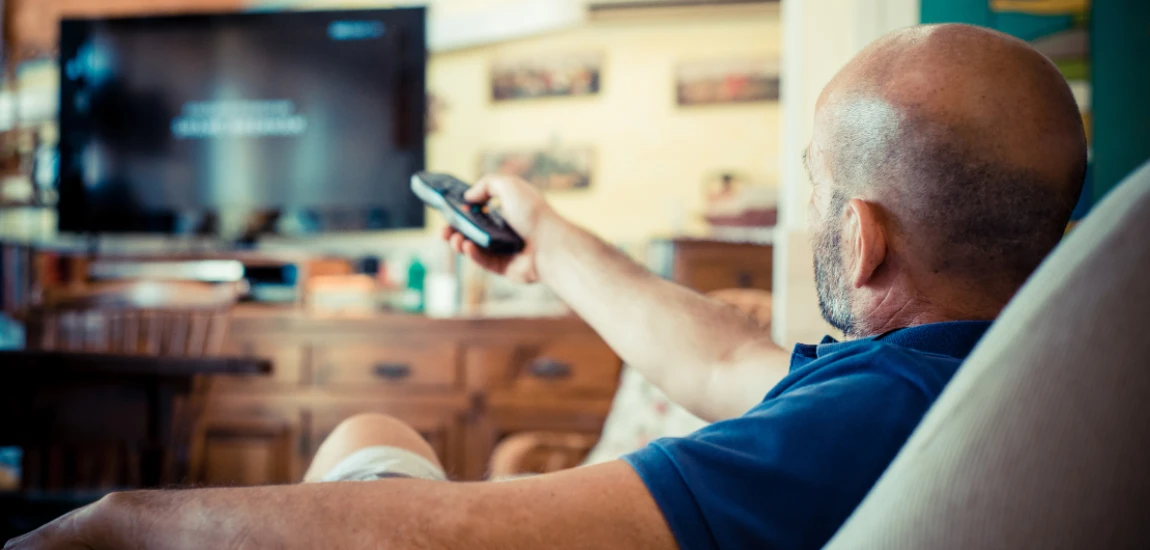The Death of ‘Must-See TV’: Why We’re Watching Everything Later (or Never)

Once upon a time, “Must-See TV” was more than a marketing slogan—it was a cultural event. Entire households and friend groups would gather at the same hour every week to watch new episodes of shows like Friends, The X-Files, or Lost. Conversations at school or work the next day revolved around what happened on last night’s episode, and missing it meant waiting weeks—or months—for a rerun. The excitement wasn’t just in the story, but in the shared experience of watching something together, in real time.
But today, that magic feels like it’s fading. With streaming platforms, on-demand content, and endless back catalogs at our fingertips, the urgency of watching a show the second it airs has evaporated. Even so-called “event television” rarely unites audiences the way it once did. Instead of gathering around the television set at 8 PM sharp, we’re hitting play days, weeks, or even years later—if at all.
This shift has profound implications, not just for viewers, but for networks, advertisers, and even how stories are written. The death of “Must-See TV” isn’t just about nostalgia; it reflects a fundamental change in how we consume entertainment. In this blog, we’ll explore the reasons behind the decline of appointment viewing, the rise of flexible habits, and what the future of television might look like in a world where nobody feels the pressure to watch right now.
The Rise and Fall of ‘Must-See TV’
The phrase “Must-See TV” was popularized by NBC in the 1990s, and it perfectly captured the cultural phenomenon of appointment viewing. People knew exactly when to sit down, what network to tune into, and how to build their week around television. Thursday nights became sacred for sitcom fans, while Sunday evenings were reserved for dramas. Families and friends planned their evenings around the broadcast schedule. TV was not just entertainment; it was ritual.
What made “Must-See TV” thrive was scarcity. Episodes aired once, and if you missed it, you were either waiting for a rerun or relying on a friend’s recap. This created urgency. Everyone tuned in not only because they wanted to watch the show, but also because they didn’t want to feel left out of the conversation. Television was watercooler culture before social media existed.
Fast forward to today, and that scarcity has disappeared. Streaming services release entire seasons at once, and cable providers offer on-demand playback. DVRs, catch-up apps, and international licensing mean you can binge-watch a show weeks or months after its premiere. The need to sit down at a specific time is gone. Instead, people watch at their convenience—and for many, that convenience includes putting shows on a never-ending “to-watch” list they may never actually reach.
The fall of “Must-See TV” isn’t just about technology; it’s about the collapse of shared cultural experiences. Where once you could assume that everyone was talking about last night’s big episode, today the conversation is fractured. One person is midway through season two, another is waiting to start, and someone else already binged the whole thing last weekend. As a result, we’ve lost the collective excitement that made television feel urgent.

Why We’re Watching Later (Or Not At All)
The biggest driver of delayed or abandoned viewing is choice overload. We live in a golden age of content, where hundreds of shows are released every year across countless platforms. From Netflix and HBO Max to Disney+, Hulu, and Apple TV+, there’s simply too much to keep up with. Instead of rushing to watch something the night it airs, many of us wait until we hear enough buzz—or until we have time, which often never comes.
Another factor is lifestyle. Modern audiences are busier than ever. Work schedules, family obligations, and the lure of social media make it harder to dedicate specific nights to TV. Unlike in the 90s, when TV was one of the few entertainment options, today we have podcasts, video games, TikTok, and endless YouTube rabbit holes competing for attention. Television is no longer the centerpiece of leisure—it’s just one option among many.
There’s also a psychological aspect: commitment fatigue. With shows requiring 10+ hours of viewing just to finish a season, audiences are hesitant to dive in. Many people abandon shows midway, not because they don’t enjoy them, but because they feel overwhelmed by the backlog. Why start a new series when you haven’t finished three others? This explains the rise of “comfort TV”—rewatching old favorites like The Office or Friends instead of committing to something new.
The combination of infinite choice, limited time, and commitment fatigue has changed the way we relate to television. We don’t rush anymore. We don’t plan around shows. We might not even finish the ones we start. This “watch later” mentality has become so normalized that networks and streaming services are rethinking how they release content—some opting for weekly drops to recapture that sense of urgency, while others lean into binge culture.

What Streaming Did to Appointment Viewing
Streaming didn’t just change how we watch—it obliterated the entire concept of live, linear viewing. With Netflix pioneering the binge-release model, audiences quickly grew accustomed to consuming content on their own terms. Instead of waiting a week between episodes, fans could devour an entire season in one weekend. This instant gratification was liberating, but it also dismantled the rhythm of television as a shared experience.
For streaming platforms, the advantages are clear: releasing all episodes at once keeps subscribers engaged for longer stretches and allows viewers to build deep emotional connections with characters. But there are downsides. The cultural buzz around new shows burns fast and fades quickly. A series might dominate social media for a week, but within days, attention shifts elsewhere. Compare that to shows like Game of Thrones, which built momentum and cultural discussion over years because of weekly releases.
Streaming also fragmented audiences across platforms. In the past, there were only a handful of major networks, so shows naturally reached massive audiences. Today, with every streaming service offering exclusives, audiences are scattered. One person might subscribe to Hulu, another to Apple TV+, and another to Disney+. This means fewer shared cultural moments and more isolated fan communities.
The most telling example is the Oscars or Super Bowl. These are some of the only remaining “appointment TV” events that still command mass attention. Outside of live sports and award shows, the urgency to watch something in real time is nearly gone. Streaming has trained us to believe that nothing is truly urgent—because it will always be there, waiting.

Can Television Ever Be “Must-See” Again?
The question now is whether “Must-See TV” can make a comeback—or if it’s gone forever. There are signs of resistance. Platforms like HBO and Disney+ still embrace the weekly model for high-profile series, and audiences often appreciate the pacing. Shows like Succession or The Mandalorian generate ongoing discussions precisely because they’re not consumed all at once. That anticipation—the feeling of waiting for the next episode—is something binge models can’t replicate.
Live events also remind us of the power of shared viewing. Major sporting events, political debates, and finales of massive shows can still draw millions of simultaneous viewers. The key difference is that these are exceptions, not the rule. For most scripted TV, the cultural urgency is gone.
Still, the industry may find ways to revive it. Some creators argue for hybrid release models—dropping a few episodes upfront, then shifting to weekly pacing. Others suggest leaning into interactive storytelling or audience participation, which could make watching in real time more engaging. The truth is, while “Must-See TV” as we knew it may never fully return, there is room for television to reinvent urgency in new forms.
The bigger shift may be in how we define “must-see.” Instead of meaning “watch it tonight or miss out,” it may now mean “this show is essential viewing at some point in your life.” The urgency may be gone, but the importance remains.





